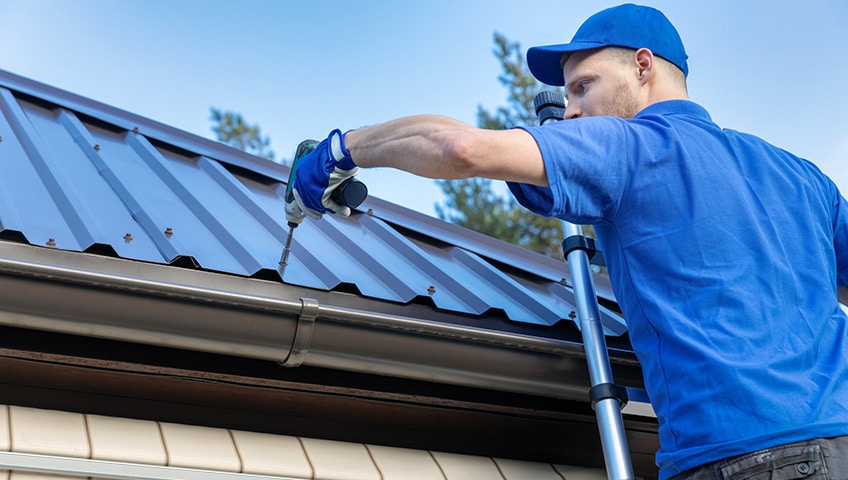
The roof is the most important part of any home. If it becomes damaged, you could end up with major water leaks around your living area that will cause thousands in damages. This blog post discusses how to protect your roof from damage so you can avoid these problems.
Inspect The Roof For Any Damage, Including Holes Or Missing Shingles
If you notice any damage, this could be a sign that your roof needs to be repaired. If there is water leaking into the home or debris has accumulated in the gutters and they are not draining properly it’s time for an inspection of the shingles on top of the roof. Any holes in these shingles will need to be fixed because if left untreated they can cause serious issues inside your living area including mold and rot which no one wants to deal with. The gutter system also needs attention when inspecting the roof as well; if too much debris builds up then it won’t drain properly and again – major problems down below!
Once you’ve inspected both areas, make sure all repairs been completed before moving onto another area of the roof.
The next area to check is around your chimney; if there are any damaged mortar joints, cracks or chunks missing from a brick it needs to be fixed immediately because this could lead water into the home and cause major problems with mold as well. This can also prevent wood burning fires inside your fireplace due to lack of airflow that builds up since you won’t want smoke going in one place and out another! Plus – structural damage where bricks have been pulled away from each other will need an expert’s attention too.

Check Your Gutters To Make Sure They Are Clean And Free Of Debris
If your gutters are clogged with debris it can prevent proper water flow into the downspouts repcalgaryhomes.ca , so they need to be inspected every season and cleaned out thoroughly. Make sure that all connections have not become loose or pulled away from each other as this will cause major issues for you later on when a big storm rolls in. If any repairs need to happen, make sure they get done quickly because if rainwater starts pooling around your home due to an unconnected gutter then you could see damage right underneath the connection point where walls meet foundation – which is never pretty!
The last area of inspection needs to focus on both sides of roof; inspect under shaded areas like overhang by trees along with parts of the roof that don’t get a lot of direct sunlight in order to find any issues. Look for peeling, bubbling or blistering paint as well because even if there is no damage now – it’s only going to become worse when hot weather comes around and sun starts baking the roof. If you see these signs, call your local contractor for an estimate on repairs right away; don’t wait until more damage has been done!
Once you’ve finished inspecting every part of the roof areas that are most susceptible too water penetration, make sure any gutters have been cleaned out and repaired properly before moving onto another area such as downspouts which can cause major pooling problems during big rain storms if not functioning correctly. Just like with anything else at home – preventative maintenance will help your home’s roof stay in tip-top shape over the years so you don’t have to deal with expensive repairs throughout time.
Now that you’ve read through some tips on how to protect your home’s roof from damage, it might be a good idea to schedule an inspection of your own before the first rain storm hits this spring! This way if any issues come up – like peeling paint or loose gutters – they can get fixed right away and avoid even bigger problems down below such as major water leaks which could lead to mold growth and more. Once winter ends is always a great time for homeowners too inspect their roofs because many parts of them are exposed during snow melt; so make sure everything looks clean and free of debris which can cause major problems if left alone.
The last thing you want to do is wait until a storm comes in and your roof starts leaking; this will only lead to more damage inside the home as well such as wet insulation, damaged ceilings or even walls that are soaked! When it comes down to it – most issues with roofs happen because something was overlooked when inspecting so don’t take any chances and make sure everything has been checked out thoroughly before springtime hits.